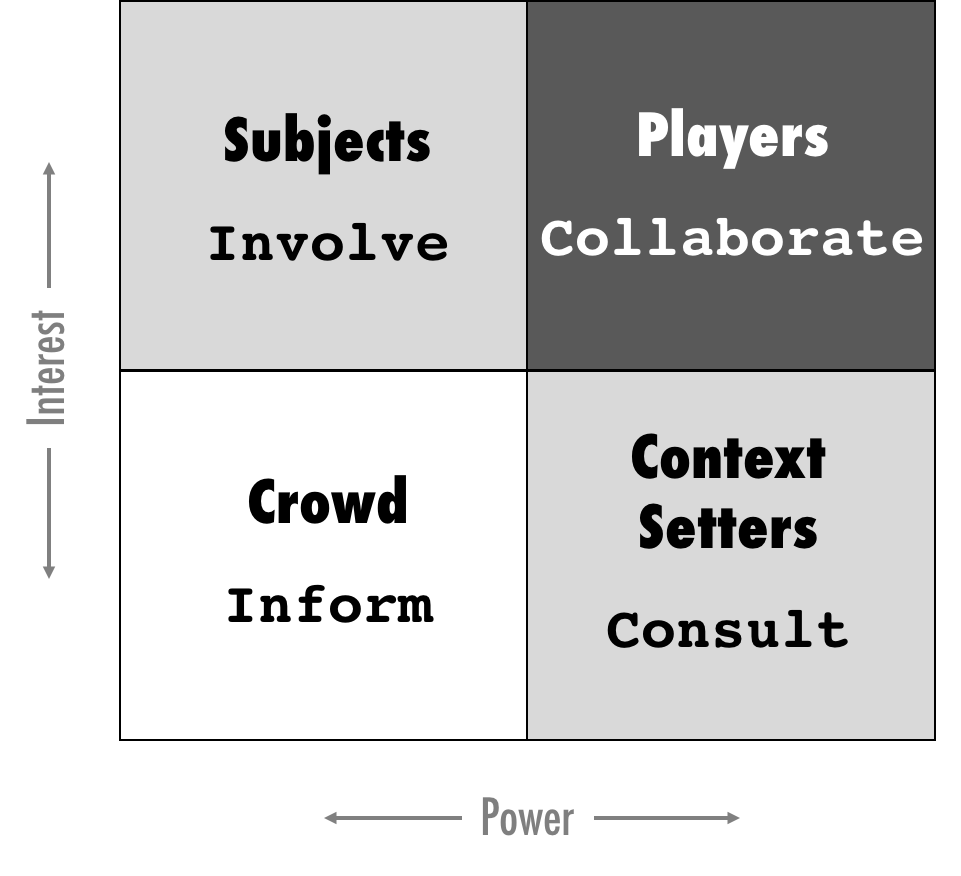Diversifying – and digitalizing – a product portfolio, a case study
20 de June, 2020QA or no QA? That’s NOT the right question…
21 de July, 2020A product manager’s life is all about relationships. Any product manager has to interact with many people inside and outside her organization that have an interest in the product she manages. In the corporate jargon, these people are called stakeholders:
In the last decades of the 20th century, the word “stakeholder” became more commonly used to mean a person or organization that has a legitimate interest in a project or entity. In discussing the decision-making process for institutions—including large business corporations, government agencies, and non-profit organizations—the concept has been broadened to include everyone with an interest (or “stake”) in what the entity does.
Source: Wikipedia
I wrote a series of articles about the relationship between the product manager and engineering, UX, product marketing, project management, and all other areas of the company – Operations, Customer Support, Legal, Sales, Finance, HR, Administrative. I also suggested the use of a tool called RASCI to help define roles and responsibilities.
I also wrote about the main characteristic any product manager needs to be successful, empathy. This is the ability someone has to walk on someone else’s shoes in order to understand her aspirations, motivations, needs, and problems.
There’s another interesting tool that can be helpful to help product managers understand how to interact with many different stakeholders of her product.
Power-Interest Grid
The Power-Interest Grid is a concept first developed in the 90’s by Aubrey L. Mendelow, and later explained in the book, “Making Strategy: Mapping Out Strategic Success”, by Fran Ackermann and Colin Eden.
Based on the power and the interest that a person or a team has in your product, you can classify them in 4 main categories.

Players are the ones with high power and interest in your product. You definitely need to collaborate frequently with them. Your product’s users and customers are definitely players, you need to collaborate with them in order to build the best product that solves their problems and addresses their needs. In some companies, probably the founder closest to the product is also a player. You should invite these people to any meeting and dynamic where strategic decisions will be made. Schedule one-on-ones to present the decisions and ask for their feedback and input.
Subjects are the ones with low power but high interest in your product. They don’t have the power to veto or change decisions, but they have a deep interest in your product. In some companies, we can think about customer support, sales, and marketing as examples of areas that play the role of subjects. They have high interest, but they don’t have the power to change your product. You can communicate with them through weekly status email, product demos. It’s important to gather their input, but remember that they don’t have the power to change your decisions.
Context setters are the ones with power to change your product but low interest in your product. Examples of areas that can play a role as context setter are HR and Legal. If HR doesn’t help you staff the team, you won’t have a team to build your product. If Legal is not aware and aligned with the legal aspects of your product, they have the power to block or delay your launch. A CFO and a controller are also two roles that have the power to change decisions that affect your product. It’s important to keep context setters well informed about your product decisions. Consult them prior to making major decisions. Keep them informed on a weekly basis.
Crowd are the ones with low power and low interest. Even though they have little power and interest, it’s important to keep them informed. Normally a monthly update on the progress of the product is enough. Can be through email or in a monthly all-hands meeting with product demos. Normally this are the people from HR, Legal, Administrative, and Finance areas who don’t are in the context setter group.
It’s important to note that each company has its own dynamic, so an area or a person that is a specific role in the power-interest grid in a company may be another role in a different company.
Summary
- Power-interest grid, together with RASCI, is a great tool to help you better understand and interact with your stakeholders.
- But don’t forget, the main tool a product manager needs to better understand and, consequently, have improved and fruitful interactions with her stakeholders is empathy.
Digital Product Management Books
Do you work with digital products? Do you want to know more about how to manage a digital product to increase its chances of success? Check out my new bundle Digital Product Management with my 2 books where I share what I learned during my almost 30 years of experience in creating and managing digital products.

